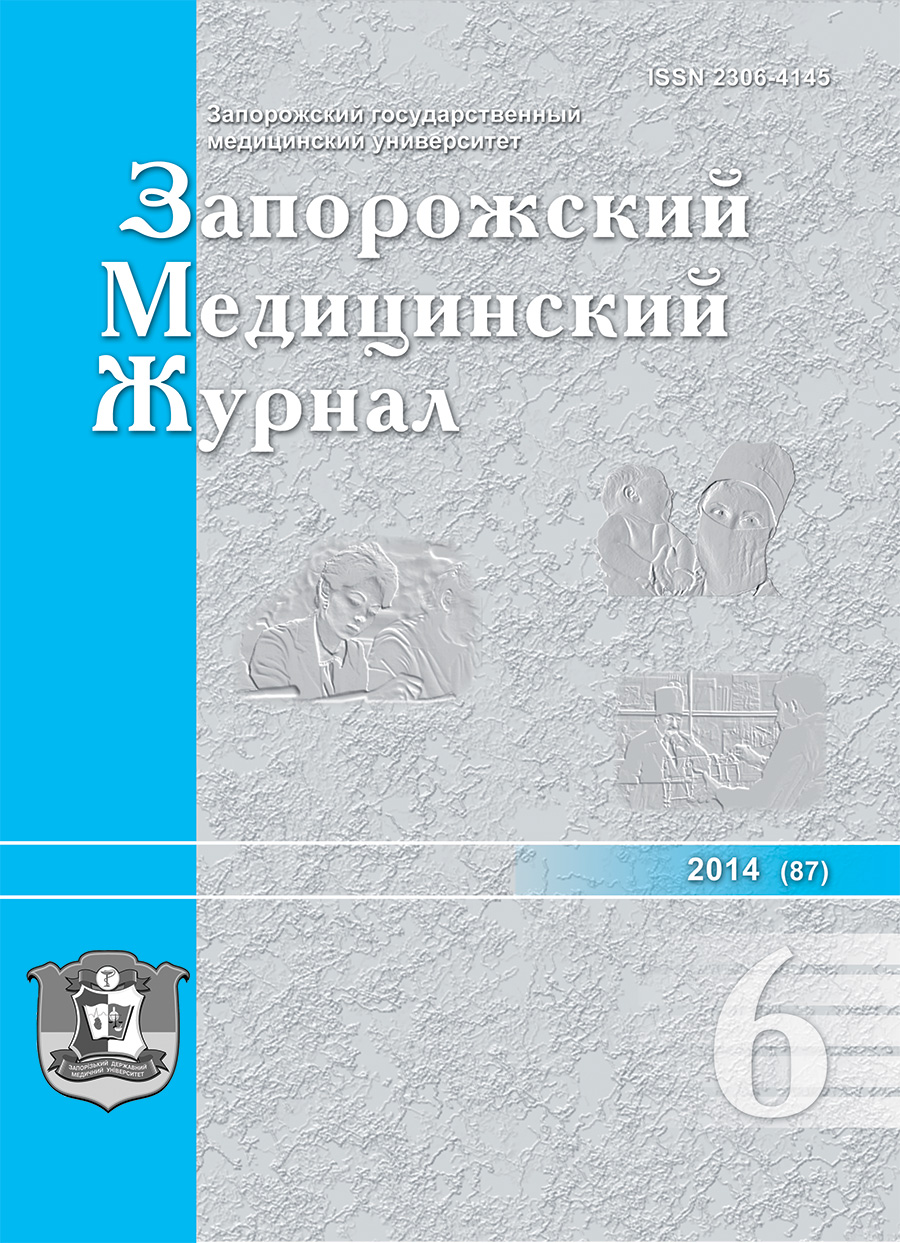The sensitivity of film-forming strains of staphylococci, isolated from the respiratory tract, to bacteriophages drugs
DOI:
https://doi.org/10.14739/2310-1210.2014.6.35872Keywords:
Biofilm, Sensitivity and Specificity, Sensitivity to Bacteriophages, DrugAbstract
Aim. To determine the sensitivity of filmforming strains of staphylococci, isolated from the respiratory tract, to bacteriophages drugs
Methods and results. It is established that biofilmforming ability was indicated in 16 (61.5 %) of the studied strains of Staphylococcus aureus, isolated from the upper respiratory tract of people. The remaining 10 (38.5 %) was not filmforming strains.
Conclusion. It was determined that more than 80% of the film- and non-filmforming strains were sensitive to phages of the drugs «Piobaсteriophage» and «Staphylococcal bacteriophage», to drug «Intestiphage» was sensitive 56.3% filmforming strains and 70% non-filmforming strains.
References
Akimkin, V. G., Darbeeva, O. S., Kolkov, V. F. (2010) Bakteriofagi: istoricheskie i sovremennye aspekty ikh primeneniya: opyt i perspektivy [Bacteriophages: historical and contemporary aspects of their application: experience and prospects]. Klinicheskaya praktika, 4, 48–54 [in Russian].
Аslanov, B. I., Jafaev, R. H., Zueva, L. P. (2003) Puti racional'nogo ispol'zovaniya sinegnojnykh bakteriofagov v lechebnoj i protivoe`pidemicheskoj praktike [Ways rational use of pseudomonas bacteriophages in medical practice and anti]. Zhurnal mikrobiologii, e`pidemiologii i immunobiologii, 5, 72–77 [in Russian].
Volkov, I. I. (1999) Sovershenstvovanie mikrobiologicheskoj diagnostiki stafilokokkovykh infekcij i e`kologicheskie aspekty ikh vozbuditelej (Avtoref. dis…kand. med. nauk). [Improving the microbiological diagnosis of staphylococcal infections and environmental aspects of their originators]. (Extended abstract of candidate’s thesis). Saint Petersburg. [in Russian].
(1985) Ob unifikacii mikrobiologicheskikh (bakteriologicheskikh) metodov issledovaniya, primenyaemykh v kliniko-diagnosticheskikh laboratoriyakh lechebno-profilakticheskikh uchrezhdenij [On the Unification of microbiological (bacteriological) research methods used in clinical diagnostic laboratories of medical institutions]. Moscow: MOZ SSSR [in Russian].
Holt, J., Krill, N., & Sint P. (Eds) (1997) Opredelitel' bakterij Berdzhi [Determinant bacteria Bergey]. Moscow: Mir. [in Russian].
Roberts, M. K. (2005) Diagnostika stafilokokkovykh infekcij [Diagnosis of staphylococcal infections]. Moscow: Mir. [in Russian].
Savchuk, T. D. (2003) Stafilokokkovye infekcii [Staphylococcal infections]. Moscow: Medicina. [in Russian].
Dzagurov, S. G., & Rezepov, F. F. (Eds) (1995) Spravochnik po primeneniyu bakterijnykh i virusnykh preparatov [Guide for the application of bacterial and viral agents]. Moscow: Medicina. [in Russian].
Klem, J., Dömötör, D., Schneider, G., et al. (2013) Bacteriophage therapy against staphylococci. Acta microbiologica et immunologica Hungarica., 60(4), 411–422. doi: 10.1556/AMicr.60.2013.4.3.
Seth, A. K., Geringer, M. R., Nguyen, K. T., et al. (2013) Bacteriophage therapy for staphylococcus aureus biofilm-infected wounds: a new approach to chronic wound care. Plastic and reconstructive surgery, 131(2), 225–234. doi: 10.1097/PRS.0b013e31827e47cd
Chan, B. K., Abedon, S. T., Loc-Carrillo, C. (2013) Phage cocktails and the future of phage therapy. Future Microbiol., 8(6), 769–783. doi: 10.2217/fmb.13.47.
Hosseinidoust, Z., Tufenkji N., van de Ven, T.G.M. Formation of biofilms under phage predation: consid erations concerning a biofilm increase. Biofouling., 29(4), 457–468. doi: 10.1080/08927014.2013.779370.
Lloyd, D. H. (2012) Alternatives to conventional antimicrobial drugs: a review of future prospects. Veterinary Dermatology., 23(4), 299–304. doi: 10.1111/j.1365-3164.2012.01042.x.
Potera, C. (2013) Phage renaissance: new hope against antibiotic resistance. Environ Health Perspect., 121(2), a48–a53.
Archer, N. K., Mazaitis, M. J., Costerton, W., et al. (2011) Staphylococcus aureus biofilms: properties, regulation and roles in human disease. Virulence., 2(5), 445–459. doi: 10.4161/viru.2.5.17724.
Sulakvelidze, A., Alavidze, Z., Morris, G. (2001) Bacteriophage therapy. Antimicrobial agents andchemotherapy., 45(3), 649–659.
Ziemska, J., Rajnisz, A., Solecka, J. (2013) New perspectives on antibacterial drug research. Cent. Eur. J. Biol., 8(10), 943–957. doi:10.2478/s11535-013-0209-6
Downloads
How to Cite
Issue
Section
License
Authors who publish with this journal agree to the following terms:
Authors retain copyright and grant the journal right of first publication with the work simultaneously licensed under a Creative Commons Attribution License that allows others to share the work with an acknowledgement of the work's authorship and initial publication in this journal. 

